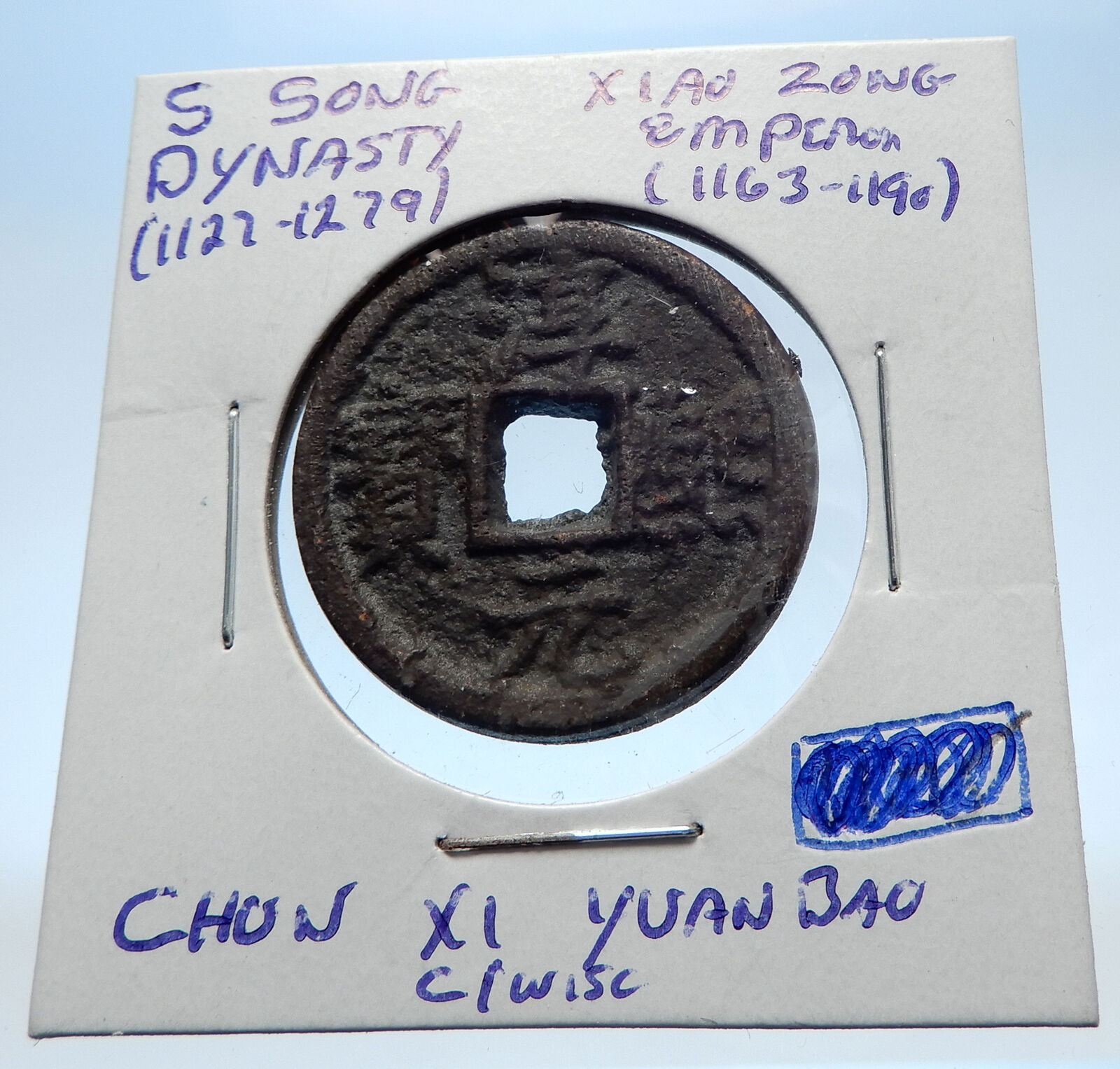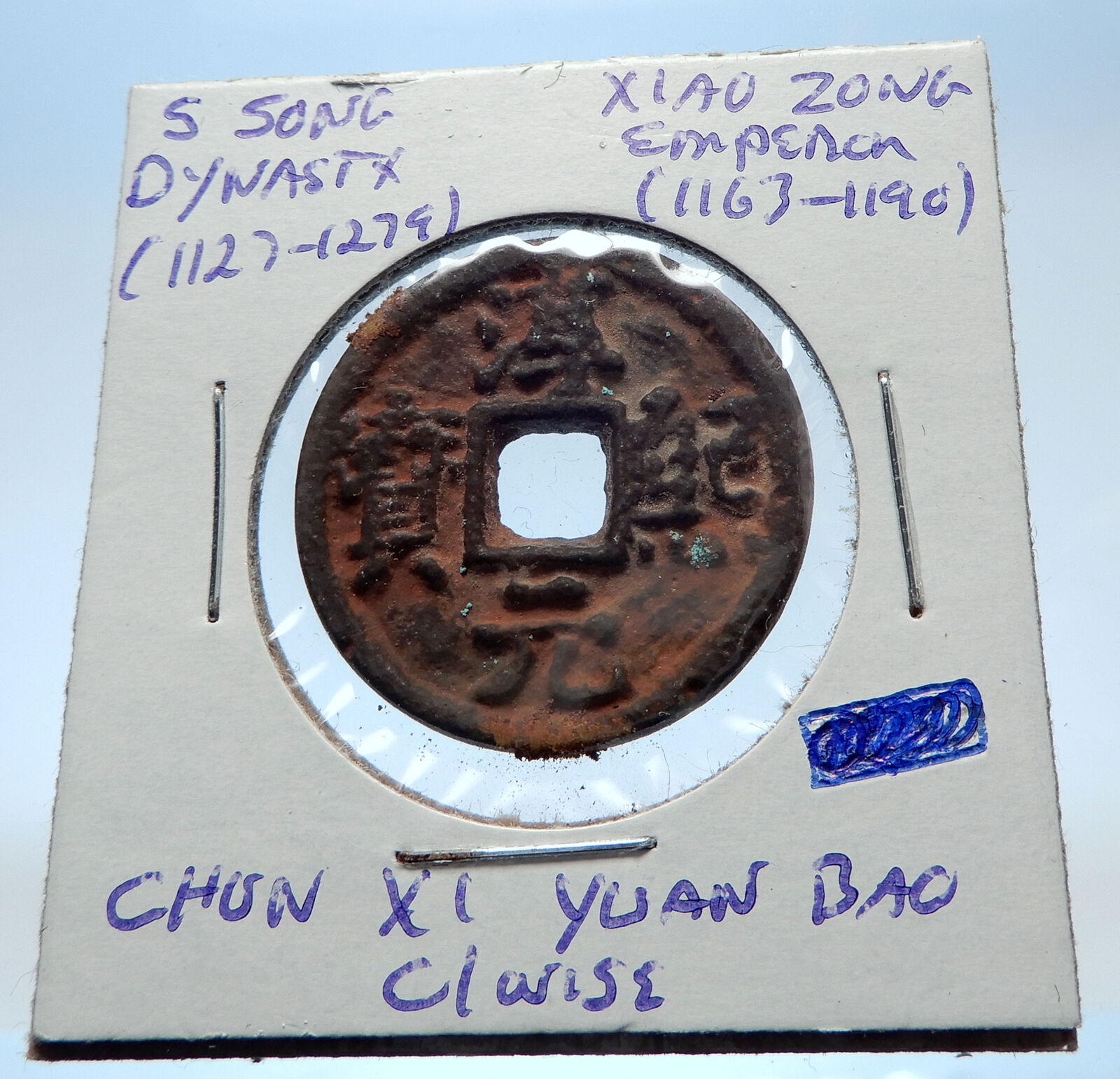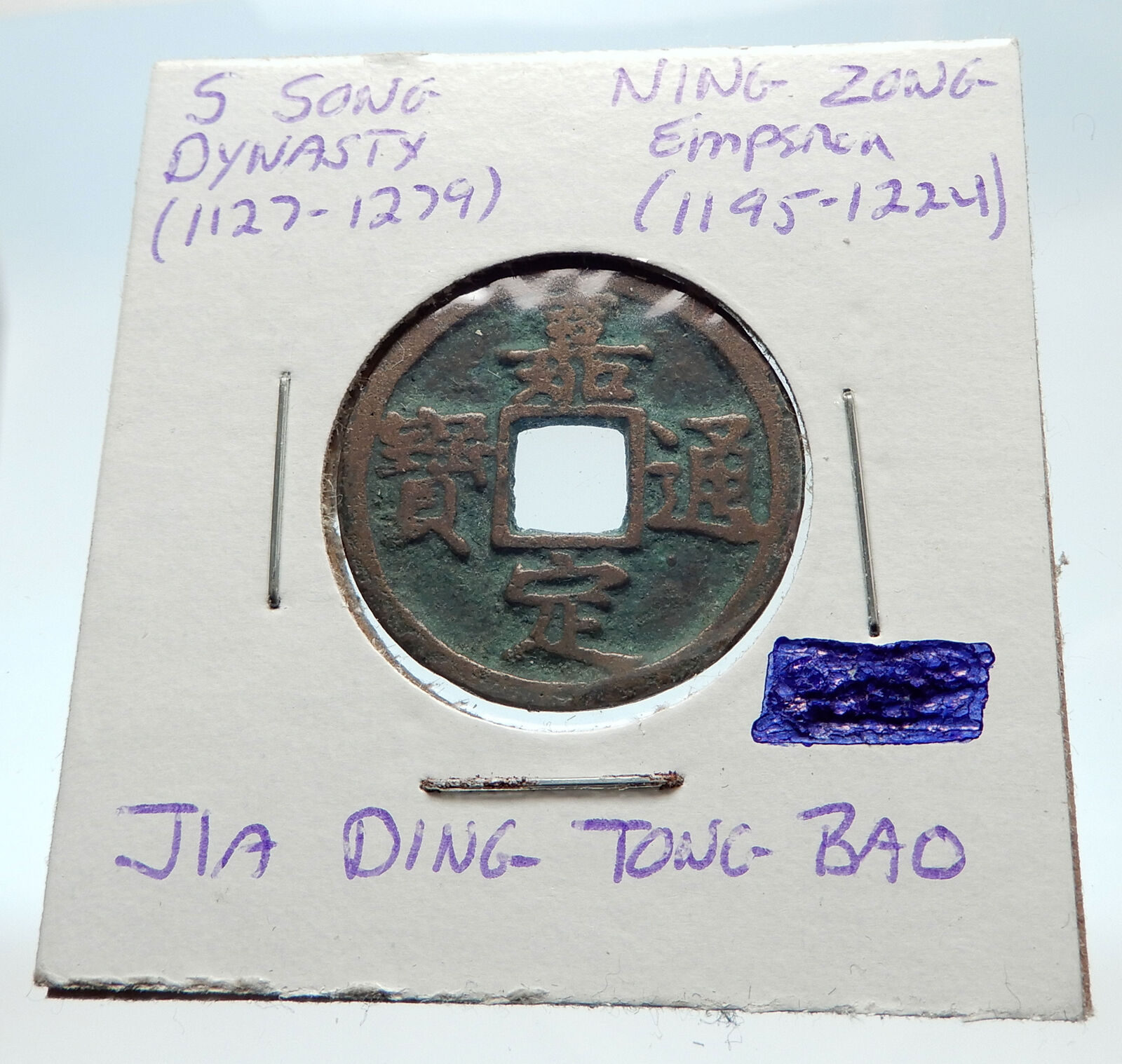|
China – Kwangtung (Guangdong) Province
1929 Silver 20 Cents 23mm (5.33 grams)
Reference: Y# 426
Bust of Sun Yat-sen
KWANG-TUNG PROVINCE Value in sprays.
You are bidding on the exact item pictured, provided with a Certificate of Authenticity and Lifetime Guarantee of Authenticity.
 Sun Yat-sen (12 November 1866 – 12 March 1925) was a Chinese physician, writer, philosopher, calligrapher and revolutionary, the first president and founding father of the Republic of China. As the foremost pioneer and first leader of a Republican China, Sun is referred to as the “Father of the Nation” in the Republic of China (ROC) and the “forerunner of democratic revolution” in the People’s Republic of China (PRC). Sun played an instrumental role in the overthrow of the Qing dynasty (the last imperial dynasty of China) during the years leading up to the Xinhai Revolution. He was appointed to serve as Provisional President of the Republic of China when it was founded in 1912. He later co-founded the Kuomintang (Nationalist Party of China), serving as its first leader. Sun was a uniting figure in post-Imperial China, and he remains unique among 20th-century Chinese politicians for being widely revered amongst the people from both sides of the Taiwan Strait. Sun Yat-sen (12 November 1866 – 12 March 1925) was a Chinese physician, writer, philosopher, calligrapher and revolutionary, the first president and founding father of the Republic of China. As the foremost pioneer and first leader of a Republican China, Sun is referred to as the “Father of the Nation” in the Republic of China (ROC) and the “forerunner of democratic revolution” in the People’s Republic of China (PRC). Sun played an instrumental role in the overthrow of the Qing dynasty (the last imperial dynasty of China) during the years leading up to the Xinhai Revolution. He was appointed to serve as Provisional President of the Republic of China when it was founded in 1912. He later co-founded the Kuomintang (Nationalist Party of China), serving as its first leader. Sun was a uniting figure in post-Imperial China, and he remains unique among 20th-century Chinese politicians for being widely revered amongst the people from both sides of the Taiwan Strait.
Although Sun is considered to be one of the greatest leaders of modern China, his political life was one of constant struggle and frequent exile. After the success of the revolution and the Han Chinese regaining power after 268 years of Qing dynasty rule, he quickly resigned from his post as President of the newly founded Republic of China to Yuan Shikai, and led successive revolutionary governments as a challenge to the warlords who controlled much of the nation. Sun did not live to see his party consolidate its power over the country during the Northern Expedition. His party, which formed a fragile alliance with the Communists, split into two factions after his death.
<psun's chief="" legacy="" resides="" in="" his="" developing="" of="" the="" political="" philosophy="" known="" as="" three="" principles="" people:="" nationalism="" (han="" chinese="" nationalism:="" independence="" from="" imperialist="" domination="" -="" taking="" back="" power="" manchurian="" qing="" dynasty),="" democracy,="" and="" people's="" livelihood="" (just="" society).
 China, officially the People’s Republic of China (PRC) since 1949, is a country in East Asia and the world’s most populous country, with a population of around 1.404 billion. Covering approximately 9,600,000 square kilometers (3,700,000 sq mi), it is the third- or fourth-largest country by total area, depending on the source consulted. Governed by the Communist Party of China, the state exercises jurisdiction over 22 provinces, five autonomous regions, four direct-controlled municipalities (Beijing, Tianjin, Shanghai, and Chongqing), and the special administrative regions of Hong Kong and Macau. China, officially the People’s Republic of China (PRC) since 1949, is a country in East Asia and the world’s most populous country, with a population of around 1.404 billion. Covering approximately 9,600,000 square kilometers (3,700,000 sq mi), it is the third- or fourth-largest country by total area, depending on the source consulted. Governed by the Communist Party of China, the state exercises jurisdiction over 22 provinces, five autonomous regions, four direct-controlled municipalities (Beijing, Tianjin, Shanghai, and Chongqing), and the special administrative regions of Hong Kong and Macau.
.svg/85px-National_Emblem_of_the_People's_Republic_of_China_(2).svg.png) China emerged as one of the world’s earliest civilizations, in the fertile basin of the Yellow River in the North China Plain. For millennia, China’s political system was based on hereditary monarchies, or dynasties, beginning with the semi-legendary Xia dynasty in 21st century BCE. Since then, China has expanded, fractured, and re-unified numerous times. In the 3rd century BCE, the Qin unified core China and established the first Chinese empire. The succeeding Han dynasty, which ruled from 206 BC until 220 AD, saw some of the most advanced technology at that time, including papermaking and the compass, along with agricultural and medical improvements. The invention of gunpowder and movable type in the Tang dynasty (618-907) and Northern Song (960-1127) completed the Four Great Inventions. Tang culture spread widely in Asia, as the new maritime Silk Route brought traders to as far as Mesopotamia and Horn of Africa. Dynastic rule ended in 1912 with the Xinhai Revolution, when a republic replaced the Qing dynasty. The Chinese Civil War resulted in a division of territory in 1949, when the Communist Party of China established the People’s Republic of China, a unitary one-party sovereign state on Mainland China, while the Kuomintang-led government retreated to the island of Taiwan. The political status of Taiwan remains disputed. China emerged as one of the world’s earliest civilizations, in the fertile basin of the Yellow River in the North China Plain. For millennia, China’s political system was based on hereditary monarchies, or dynasties, beginning with the semi-legendary Xia dynasty in 21st century BCE. Since then, China has expanded, fractured, and re-unified numerous times. In the 3rd century BCE, the Qin unified core China and established the first Chinese empire. The succeeding Han dynasty, which ruled from 206 BC until 220 AD, saw some of the most advanced technology at that time, including papermaking and the compass, along with agricultural and medical improvements. The invention of gunpowder and movable type in the Tang dynasty (618-907) and Northern Song (960-1127) completed the Four Great Inventions. Tang culture spread widely in Asia, as the new maritime Silk Route brought traders to as far as Mesopotamia and Horn of Africa. Dynastic rule ended in 1912 with the Xinhai Revolution, when a republic replaced the Qing dynasty. The Chinese Civil War resulted in a division of territory in 1949, when the Communist Party of China established the People’s Republic of China, a unitary one-party sovereign state on Mainland China, while the Kuomintang-led government retreated to the island of Taiwan. The political status of Taiwan remains disputed.
.svg/220px-People's_Republic_of_China_(orthographic_projection).svg.png) Since the introduction of economic reforms in 1978, China’s economy has been one of the world’s fastest-growing with annual growth rates consistently above 6 percent. As of 2016, it is the world’s second-largest economy by nominal GDP and largest by purchasing power parity (PPP). China is also the world’s largest exporter and second-largest importer of goods. China is a recognized nuclear weapons state and has the world’s largest standing army and second-largest defense budget. The PRC is a permanent member of the United Nations Security Council as it replaced the ROC in 1971, as well as an active global partner of ASEAN Plus mechanism. China is also a leading member of numerous formal and informal multilateral organizations, including the Shanghai Cooperation Organization (SCO), WTO, APEC, BRICS, the BCIM, and the G20. China is a great power and a major regional power within Asia, and has been characterized as a potential superpower. Since the introduction of economic reforms in 1978, China’s economy has been one of the world’s fastest-growing with annual growth rates consistently above 6 percent. As of 2016, it is the world’s second-largest economy by nominal GDP and largest by purchasing power parity (PPP). China is also the world’s largest exporter and second-largest importer of goods. China is a recognized nuclear weapons state and has the world’s largest standing army and second-largest defense budget. The PRC is a permanent member of the United Nations Security Council as it replaced the ROC in 1971, as well as an active global partner of ASEAN Plus mechanism. China is also a leading member of numerous formal and informal multilateral organizations, including the Shanghai Cooperation Organization (SCO), WTO, APEC, BRICS, the BCIM, and the G20. China is a great power and a major regional power within Asia, and has been characterized as a potential superpower.
Guangdong (Chinese: 广东) is a province in South China, located on the South China Sea coast. Traditionally romanised as Kwangtung, Guangdong surpassed Henan and Sichuan to become the most populous province in China in January 2005, registering 79.1 million permanent residents and 31 million migrants who lived in the province for at least six months of the year; the total population was 104,303,132 in the 2010 census, accounting for 7.79 percent of Mainland China’s population. This also makes it the most populous first-level administrative subdivision of any country outside the former British Raj, as its population is surpassed only by those of the Pakistani province of Punjab[8] and the Indian states of Maharashtra and Uttar Pradesh. The provincial capital Guangzhou and economic hub Shenzhen are among the most populous and important cities in China. The population increase since the census has been modest, the province registering 108,500,000 people in 2015.
Most of Guangdong Province is administered by the People’s Republic of China (PRC). However, the archipelagos of Pratas in the South China Sea are controlled by the Republic of China (ROC, a.k.a. Taiwan). Thus, there are two provincial entities: the Guangdong Province administered by the PRC and the Guangdong Province of the ROC.
Since 1989, Guangdong has topped the total GDP rankings among all provincial-level divisions, with Jiangsu and Shandong second and third in rank. According to state statistics, Guangdong’s GDP in 2017 reached 1.42 trillion US dollars (CNY 8.99 trillion), making its economy roughly the same size as Mexico. Since 1989, Guangdong has had the highest GDP among all provinces of Mainland China. The province contributes approximately 12% of the PRC’s national economic output, and is home to the production facilities and offices of a wide-ranging set of Chinese and foreign corporations. Guangdong also hosts the largest import and export fair in China, the Canton Fair, hosted in the provincial capital of Guangzhou.
|





 Sun Yat-sen (12 November 1866 – 12 March 1925) was a Chinese physician, writer, philosopher, calligrapher and revolutionary, the first president and founding father of the Republic of China. As the foremost pioneer and first leader of a Republican China, Sun is referred to as the “Father of the Nation” in the Republic of China (ROC) and the “forerunner of democratic revolution” in the People’s Republic of China (PRC). Sun played an instrumental role in the overthrow of the Qing dynasty (the last imperial dynasty of China) during the years leading up to the Xinhai Revolution. He was appointed to serve as Provisional President of the Republic of China when it was founded in 1912. He later co-founded the Kuomintang (Nationalist Party of China), serving as its first leader. Sun was a uniting figure in post-Imperial China, and he remains unique among 20th-century Chinese politicians for being widely revered amongst the people from both sides of the Taiwan Strait.
Sun Yat-sen (12 November 1866 – 12 March 1925) was a Chinese physician, writer, philosopher, calligrapher and revolutionary, the first president and founding father of the Republic of China. As the foremost pioneer and first leader of a Republican China, Sun is referred to as the “Father of the Nation” in the Republic of China (ROC) and the “forerunner of democratic revolution” in the People’s Republic of China (PRC). Sun played an instrumental role in the overthrow of the Qing dynasty (the last imperial dynasty of China) during the years leading up to the Xinhai Revolution. He was appointed to serve as Provisional President of the Republic of China when it was founded in 1912. He later co-founded the Kuomintang (Nationalist Party of China), serving as its first leader. Sun was a uniting figure in post-Imperial China, and he remains unique among 20th-century Chinese politicians for being widely revered amongst the people from both sides of the Taiwan Strait. China, officially the People’s Republic of China (PRC) since 1949, is a country in East Asia and the world’s most populous country, with a population of around 1.404 billion. Covering approximately 9,600,000 square kilometers (3,700,000 sq mi), it is the third- or fourth-largest country by total area, depending on the source consulted. Governed by the Communist Party of China, the state exercises jurisdiction over 22 provinces, five autonomous regions, four direct-controlled municipalities (Beijing, Tianjin, Shanghai, and Chongqing), and the special administrative regions of Hong Kong and Macau.
China, officially the People’s Republic of China (PRC) since 1949, is a country in East Asia and the world’s most populous country, with a population of around 1.404 billion. Covering approximately 9,600,000 square kilometers (3,700,000 sq mi), it is the third- or fourth-largest country by total area, depending on the source consulted. Governed by the Communist Party of China, the state exercises jurisdiction over 22 provinces, five autonomous regions, four direct-controlled municipalities (Beijing, Tianjin, Shanghai, and Chongqing), and the special administrative regions of Hong Kong and Macau. .svg/85px-National_Emblem_of_the_People's_Republic_of_China_(2).svg.png) China emerged as one of the world’s earliest civilizations, in the fertile basin of the Yellow River in the North China Plain. For millennia, China’s political system was based on hereditary monarchies, or dynasties, beginning with the semi-legendary Xia dynasty in 21st century BCE. Since then, China has expanded, fractured, and re-unified numerous times. In the 3rd century BCE, the Qin unified core China and established the first Chinese empire. The succeeding Han dynasty, which ruled from 206 BC until 220 AD, saw some of the most advanced technology at that time, including papermaking and the compass, along with agricultural and medical improvements. The invention of gunpowder and movable type in the Tang dynasty (618-907) and Northern Song (960-1127) completed the Four Great Inventions. Tang culture spread widely in Asia, as the new maritime Silk Route brought traders to as far as Mesopotamia and Horn of Africa. Dynastic rule ended in 1912 with the Xinhai Revolution, when a republic replaced the Qing dynasty. The Chinese Civil War resulted in a division of territory in 1949, when the Communist Party of China established the People’s Republic of China, a unitary one-party sovereign state on Mainland China, while the Kuomintang-led government retreated to the island of Taiwan. The political status of Taiwan remains disputed.
China emerged as one of the world’s earliest civilizations, in the fertile basin of the Yellow River in the North China Plain. For millennia, China’s political system was based on hereditary monarchies, or dynasties, beginning with the semi-legendary Xia dynasty in 21st century BCE. Since then, China has expanded, fractured, and re-unified numerous times. In the 3rd century BCE, the Qin unified core China and established the first Chinese empire. The succeeding Han dynasty, which ruled from 206 BC until 220 AD, saw some of the most advanced technology at that time, including papermaking and the compass, along with agricultural and medical improvements. The invention of gunpowder and movable type in the Tang dynasty (618-907) and Northern Song (960-1127) completed the Four Great Inventions. Tang culture spread widely in Asia, as the new maritime Silk Route brought traders to as far as Mesopotamia and Horn of Africa. Dynastic rule ended in 1912 with the Xinhai Revolution, when a republic replaced the Qing dynasty. The Chinese Civil War resulted in a division of territory in 1949, when the Communist Party of China established the People’s Republic of China, a unitary one-party sovereign state on Mainland China, while the Kuomintang-led government retreated to the island of Taiwan. The political status of Taiwan remains disputed. .svg/220px-People's_Republic_of_China_(orthographic_projection).svg.png) Since the introduction of economic reforms in 1978, China’s economy has been one of the world’s fastest-growing with annual growth rates consistently above 6 percent. As of 2016, it is the world’s second-largest economy by nominal GDP and largest by purchasing power parity (PPP). China is also the world’s largest exporter and second-largest importer of goods. China is a recognized nuclear weapons state and has the world’s largest standing army and second-largest defense budget. The PRC is a permanent member of the United Nations Security Council as it replaced the ROC in 1971, as well as an active global partner of ASEAN Plus mechanism. China is also a leading member of numerous formal and informal multilateral organizations, including the Shanghai Cooperation Organization (SCO), WTO, APEC, BRICS, the BCIM, and the G20. China is a great power and a major regional power within Asia, and has been characterized as a potential superpower.
Since the introduction of economic reforms in 1978, China’s economy has been one of the world’s fastest-growing with annual growth rates consistently above 6 percent. As of 2016, it is the world’s second-largest economy by nominal GDP and largest by purchasing power parity (PPP). China is also the world’s largest exporter and second-largest importer of goods. China is a recognized nuclear weapons state and has the world’s largest standing army and second-largest defense budget. The PRC is a permanent member of the United Nations Security Council as it replaced the ROC in 1971, as well as an active global partner of ASEAN Plus mechanism. China is also a leading member of numerous formal and informal multilateral organizations, including the Shanghai Cooperation Organization (SCO), WTO, APEC, BRICS, the BCIM, and the G20. China is a great power and a major regional power within Asia, and has been characterized as a potential superpower. 




